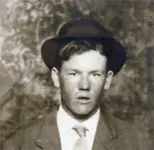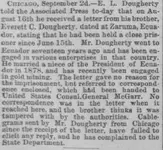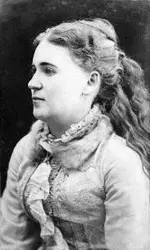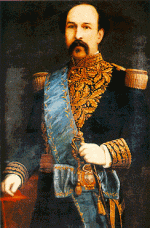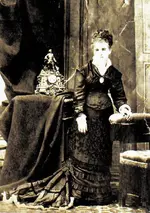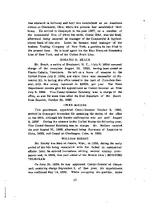Which unknown Andean fold can hide the secret legendary Paititi Inca city? It is one of the most important archaeological enigmas of South American continent which we are maybe just about to penetrate.
According to old time chronicles and local traditions, Paititi would have been a huge city of the Inca empire which would be buried somewhere in the Peruvian southeast Amazonian forest. People have been looking for it for centuries in all South America. But the searches have focused for about fifty years on a particular region squeezed between Peru, Brazil and Bolivia.
220px-Francisco-Pizarro-um1540
Francisco Pizarro, photo-Wikipedia commons
Was this city the dark side of the Empire or a secret for the Incas? Nobody knows it because nobody has discovered this mysterious city yet. After Pizarro executed in 1533 the last Inca emperor Atawalpa, the treasures of the Tawantinsuyu Empire would have been urgently hidden in this city. Tons of gold and magnificent precious objects coming from the Inca capital Cusco would have been passed in transit hurriedly towards the jungle. Spanish contemporary columnists wrote that twenty thousand gold loaded lamas were taken to an unknown eastern destination by the wife of the Inca emperor (the Coya). As it can be seen the Paititi legend is linked to ransom and gold stories. It is the reason why its search has been always full of dramas. Most of people that are still looking for it focus generally only on this damned gold for which men and women died during past centuries.
I have been dedicating my research on the permanent presence of Incas in Amazonian forest and on the quest for Paititi for the last twelve years. I organized several expeditions on the tracks of mysterious “pyramids” localized by satellite in December 1975. I studied also petroglyphs in the amazing site of Pusharo. After numerous search campaigns in the jungle of Manú, I have the feeling that I have never been closer to discover the secret city of the Incas than during my last 2011 – 2013 expeditions. My team brought up to date about thirty amazing archeological sites in a lost valley located on the border of the departments of Cusco and Madre de Dios: a magnificent Inca fortress, several agrarian cities, a ceremonial center in relation with a necropolis and especially several full cities composed by hundreds of buildings, small streets and squares, like real Amazonian Pompeii!
During one of these expeditions the team followed the Qhapaq Ñan old Inca road to the forest. Each day we did amazing discoveries in a lost valley named the “valley of Lacco” which means “the labyrinth” or “the place where we get lost” in Quechua, the Inca language. This name would come from the Spanish invasion period when an important part of Inca aristocracy would have taken refuge in the jungle on the road to Paititi. A lot of Quechua farmers who still live nowadays in this valley as modestly as in the Inca period recall a mysterious exodus: the one of aristocrats coming from Cusco before the arrival of the Spanish conquistadors to the imperial city.
The Lacco valley including the Lares and Yanatile districts has been a vast garden since the Inca period. Its cultivated terraces fed the Cusco city at these old times. Several agrarian communities are distributed along its ninety kilometer long territory situated in the northern part of Cusco department, on the border of Peruvian Amazonian forest. Nowadays these communities are called Umapata, Hualla, Suyo, Quinuay, Juy Huay, Choroyoc, Mendosayoc, Mesapata, San Antonio, Ccorimayoc, Naranjayoc and Sacramento…
Five centuries later it is not easy even today to reach Cusco from the Valley of Lacco. An asphalted road leaves the regional capital city and leads to Calca which is the provincial town. Then a dirt road winds through the Andes to the northern direction and as far as Quebrada Honda village after going through Lares and Amparaes villages. It is a real rodeo in the Andes! The track ends some kilometers farther at the Lacco valley entrance. To continue on the famous Qhapaq Ñan path it is then necessary to walk and to use mules which are the only way to carry the load.
At the beginning of 2011 my team and I had learned by natives of the existence of numerous archaeological ruins in the Umapata[1]sector located just at the Lacco valley entrance. So we decided to organize a campaign in 2011 to verify this information.
We effectively discovered there an archaeological heritage divided into two main zones:
The current village built around a small colonial church called “Virgen Auxiliadora”, itself built on the foundations of an old ceremonial platform (usno) dating from Inca period; we found there a lot of archeological evidences,
An important center, far from the village by about hundred meters, at the top of a hill which dominates the rio Mapacho; we discovered there valuable material like ceramics and lithic objects.
The colonial church was built on an Inca platform which certainly corresponded to a pyramid fitted out with several steps. Spanish built the church on the pyramid foundations as they had decided to erase any evidence of paganism and idolatry in these conquest times. The church front wall is decorated with friezes and figures dated 1906. The building is surrounded by an approximately quadrangular wall of 0.80 meter height. Many niches appear in this wall.
When we came up to this area we met a first building whose cultural filiation is evident. It indicates the entrance to the current religious space but also to the initial Inca temple. The building had two floors and two doors to get into it. One of these doors is on the western side of the construction and the other one on its eastern side. Four trapezoidal niches can be seen in the internal part of the wall. An outside niche is fitted out on the right side of the western door. The little church is at twenty meters from there. We noticed in the surroundings the presence of low walls and terraces (andenes).
A second edifice was built at approximately ten meters from the church in the eastern direction. It overhangs the rio Mapacho which flows five hundred meters lower. This building is 8 meters long and 5 meters wide. It includes eight trapezoidal niches of different sizes. Walls are 2.20 meters high.
Behind the church we discovered a third construction which is 8 meters long and 3 meters wide. Four internal niches decorate the walls of this house overgrown with vegetation like both previous ones. We noticed the presence of an outside cavity on the left side of the central door at 1.40 meters height from the ground.
Seventy meters farther we located a fourth building of 9 meters by 4 meters. Walls are decorated with nine trapezoidal niches. An outside niche is still visible on one of the walls. These four buildings had to be linked to the ceremonial function of the area.
The archaeological heart of the Umapata complex is located in Tintinniyoc area located at six hundred meters from the previous area. Two natives were in charge of leading us to it.
After climbing up a path with a moderate slop during about twenty minutes, we arrived finally in front of a first block of houses. They are located in the farm (chakra) of an Umapata inhabitant who cultivates his means of subsistence among these ruins. A first building is 8.40 meters by 7.20 meters. A 0.90 meter wide door is facing north. Two trapezoidal niches decorate the internal walls.
We noticed the presence of a lot of ceramic fragments. There are thousands of them! The ground is often turned over by the owner, so many ceremonial and usual object fragments are moved every day. We deplore that an incomparable archaeological heritage disappears by this way little by little definitively. We brought up to date local rustic ceramic without any motif or trace of dye, but we found fragments with typical geometrical motifs from the culture “lucre”. We found finally an important quantity of quite thin fragments coming from the Cusco Inca culture. They are collars of aryballes, handles of dishes (cuencos, ollas) and lithic objects such as mortars with hand (mus’ka) and grindstones (tunawa).
A second building is in front of the previous one, distant from it by eight meters. It is 7.80 meters long and 7.40 meters wide. It contains an internal niche and a 0.90 meters wide door facing north. Between both edifices we discovered a small room of 5 meters length and 4.80 meters width. It was apparently initially linked to the first building and belongs to the same complex. Unfortunately it is bad-preserved. The access door is facing east and looks onto a patio close to the first building.
The more we progressed the more we became aware of the importance of Umapata. It is a real small Inca citadel constituted of hundred buildings clustered around small squares or esplanades. Each group communicates with the others by means of narrow lanes and small passages.
Vestiges cover the totality of the mountain. Natives indicated to us that there are other small urban areas of Inca origin in the direction of rio Mapacho. They certainly belong to the same archaeological complex. They are probably buildings, andenes, chullpas, etc…
Some ten meters farther we met another group of houses consisting of seven buildings clustered around a rectangular square. Farther again we discovered another serie of lined up buildings among which the chacra owner cultivates nowadays his vegetables.
Then we progressed among ruins and approached a sector not affected by the farmer. Buildings are swallowed up by luxuriant vegetation with trees, ferns and creeping plants. A building composed by two rooms is particularly good-looking. Each of these rooms has a door to get inside. Another door between both rooms is particularly stylized. It is a “portada” whose walls are decorated with niches and trapezoidal windows. This door opens to north. The main room is 5.60 meters by 5 meters. Its external door opens to east. The second room seems to be a kind of hallway. It is 5 meters long and 3 meters wide.
A few later and some ten meters farther we came to the top of the hill. We discovered there the main building: a temple! It is 10 meters long and 5 meters wide. It contains two main entrances facing east. They look onto a small clear square which opens onto the river. The main wall is decorated with about twenty niches arranged on two rows. Two meters farther and to the South we found another building which is 5 meters long and 4 meters wide. We noticed the presence of a niche and nail-stones on the four internal walls at 1 meter height from the ground. These nail-stones were maybe used to fix the roof.
A small triangular passage leads to a clear square which is three meters raised and located behind the temple. It is the highest point of the city. In the center of it we noticed a quadrangular shape of 2 meters height and 3 meters side, completely covered by vegetation. Its base is constituted by a low wall of 0.60 meters height. It has a vague pyramidal shape. It looks like an artificial or ceremonial platform (usno). The Incas realized offerings and maybe sacrifices on it. From this privileged point we had a fantastic view over the surrounding valleys. It had to be also an ideal lookout to control any raid in the valley of Lacco for miles around.
The Umapata site appears like a relatively important archaeological center. Its current poor condition needs urgent protective measures. It is indeed threatened to disappear at middle-term or long-term because some natives do not hesitate to pull down its edifices to build their own houses with the stones of the ancestral buildings.
ump
A few kilometers away from Umapata we discovered the monumental complex of Hualla Mocco. Like Umapata this site is totally unknown from the modern archaeology. My team and I were accompanied by a “supervisor” of the Peruvian Culture Ministry to put on the cadastral register each architectural component. The complex is composed by three sectors: a religious sector, a sector with private habitations and a military sector.
Imposing buildings are built on the top of a crest which overlooks the entrance of the valley. It is not a matter of chance as this place was particularly strategic. The site is constituted by large rooms fitted with wide trapezoidal niches of one meter height by 0.50 meter width on their base. The architecture is imperial and of military type. Not far from a temple with impressive proportions we discovered a magnificent mirador from which we had a panoramic vision on the valley. On the right side of it a quadrangular building has the shape of a small tower. It is 3 meters wide and has large outside niches. It looks like a prison. Some meters farther there is a rock with singular outlines which reproduce the silhouette of the mountains behind it. This type of rock had generally an astronomical function to perform time measurements for instance. There are rocks like that at the citadel of Machu Picchu. Hualla was doubtless a fortress controlling the access to the valley of Lacco towards Paititi.
The next archeological site, Torre Mocco[2], is also situated at the top of a crest, from which we had a 360° panoramic vision. Initially occupied by the Killke people it was during the Inca period a small agrarian center of approximately thirty houses. Tens of perfectly preserved cultivated terraces are close to it. The following site which is only just two kilometers far from Torre Mocco had the same function. Lucma Cancha[3] was a small village of about twenty houses and streets. Although it probably dates from pre-Inca times it was occupied later by Quechua farmers during the imperial period. We indeed found on the ground an extensive archaeological material dating back to the Tawantinsuyu classic age or Late Horizon.
Lucma Cancha was linked to Torre Mocco and to the following city we reached after. And what a city! We have been told by natives from Lacco since 2009 that a major archeological site was situated at the top of the mountain close to the site we were. Guided by some of them we went in search of these vestiges. We discovered the complex is composed by two sectors: a lower sector called Patanmarca and an upper one called Llactapata. Patan means crest or high in Quechua language and marca means area. And Llactapata mean the “village in the mountain”.
The monumental and well-preserved architectural style struck us immediately. It is no more an agrarian site but vestiges whose proportions look like those of Choquequiraw or Machu Picchu. We saw everywhere carefully built walls with impressive architecture. Sometimes small alleys lead to buildings. It is probably a particularly strategic military city, offering a panoramic vision towards Lucma Cancha, Torre Mocco and Hualla, but also controlling the access towards the Manú forest which is located at the East and Megantoni forest located at the North. We noticed most of buildings are covered by a bright yellow dye which confers to them a quite singular personality. This color comes probably from a microscopic mushroom of lichens family which gives to the stone this wonderful natural paint aspect.
We spent several hours among the ruins and finally cleared a magnificent temple whose roof is partially preserved. Its walls are also completely covered by the yellow paint. The main room has impressive dimensions (15 meters length by 6 meters wide) and includes about fifty rectangular niches on two rows. Some square buildings are close to the temple and may constitute the religious sector of the city. Finally, just close to the temple, a mirador offered to us an amazing view onto the entire valley.
According to our calculations this city included not less than hundred buildings. However, other massive constructions, situated at several hundreds of meters from it along the old Inca road, seem to be linked to this city. There impressive support walls were built by the Incas to strengthen in places their famous royal road. One of these walls is actually 5 meters high and 50 meters long. It has protected the steps of the travelers walking on the Qhapaq Ñan for more than five centuries. Where do these roads lead to? Some old natives will answer you that they lead up to the “main city”, somewhere lost in the forest just behind the valley where they live. True or not, this belief is passed down from generation to generation.
Everywhere andenes and Inca walls belonging to old cities whose names have been forgotten appear from mountains covered by forests. Also in the valley of Lacco some natives showed us the way to significant terraces and “circular cavities” some of which have an internal masonry. We discovered then the ceremonial complex of Puccro linked to a necropolis constituted by tens of graves of Inca origin and funeral towers (chullpas) which are perfectly preserved. In front of Puccro and on the other bank of rio Mapacho, we discovered a second necropolis named Rimac Pampa which means “pampa which speaks”. It is composed by tens of monumental graves. We wonder who these particularly elaborate graves were devoted to. Was it to the nobility of Cusco? Certainly not. Was it to ancient time farmers of Lacco? Even less. Several graves were opened and plundered a long time ago. Other ones however are still intact and contain without doubt fardos, kinds of fabric linen sarcophagi wrapping a mummy.
A few days later and still in the valley of Lacco, the Inca road leads to a kind of street which is lined on both sides with many walls sections partially hidden by luxuriant vegetation. We counted there tens of square or rectangular buildings. We were in another lost city also named Llactapata.
Some of these walls are eroded by the intrusive vegetation and collapsed. But many buildings remain intact, revealing 2 meters high walls, fitted out with magnificent trapezoidal niches and decorated sometimes with double jamb windows or with Inca architecture typical portadas. We also found there many ceramic fragments strewn on the ground. Some of them are decorated with geometrical motifs or with animal drawings. Other ones have even kept traces of paint.
cr
Several groups of buildings are separated by streets crossing each other at right angles. Llactapata is a complete city totally unknown from the modern archaeology like all the sites my team and I investigated in this region. We counted approximately hundred and fifty buildings which are clustered around two squares and separated by thirteen streets disposed along six horizontal lines and seven vertical lines. This city had doubtless an administrative function within the framework of exchanges between the Andean high plateaus and the Antisuyo forest. Cultivations with monumental terraces stretch not far from the city. It is really an important archeological site probably located on the road to Paititi.
To our great surprise, the valley of Lacco proves to be a new Sacred Valley of the Incas. There are ruins everywhere. We discovered during the next weeks a lot of new sites. They are entire cities! They are named by natives Cochapata, Hatun Monte, Chaupicchullo, Apucatina or Pantipayana. Later, in a nearby valley named Chunchusmayo, walking to the National park of Manú, we brought up to date the sites of Tambo Ccasa, Inca Tambo and Monte Puncu.
mp
“Inkari 2011″ campaign aimed mainly at checking several testimonies coming from Matsiguengas natives living in Megantoni forest. According to them important archaeological remains would be hidden somewhere between rio Ticumpinia source and rio Timpía source, in the province of La Convención, in the northern part of Cusco department. It is a matter of cyclopean walls constituted by big size stones delicately assembled like at Sacsayhuaman fortress, as well as house foundations, stony stairs and Inca roads.
On the way to Megantoni our team stopped off at Piña Mayo which is an area located in the northern part of valley of Lacco, not far from Esmeralda and Sacramento districts. We found there several tens of habitations of Inca origin among which some are quite well-preserved. The grouping has many walls and is quite similar to Inca citadels of Lacco and Chunchusmayo. It seems it leads inexorably northward to the National Sanctuary of Megantoni which is the cradle of Matsiguengas civilization, located only few kilometers far from where we were.
Our team sank with difficulty into the wet and impenetrable sanctuary forest. After having progressed for two weeks we reached the rio Cusirini (or Taperachi) bank. It is an affluent of rio Ticumpinia which flows into rio Urubamba five kilometers northward far from the pongo of Mainique which is the natural entry towards the Antisuyo. There, in full forest, we revealed some parts of the famous Inca road. We succeeded in following it along several hundreds of meters. It goes northward and seems still well-visible by places, sometimes lined with small support walls. It is 1.1 meters wide and partially stone paved. It looks like those we previously saw at Lacco and at Chunchusmayo. According to Matsiguenga natives who guided us, it continues along up to rio Timpía sources where it gets lost then. It crosses rio Cusirini and then rio Ticumpinia whose sources constituted our exact 2011 campaign final destination.
A little farther we discovered many surprising cultivation terraces. It seems that the entire Cusirini valley was cultivated in Inca times for the needs of an important center of population which unfortunately we could not locate. Exhausted by weeks of a difficult walking and by a lack of food, our team was obliged to turn back and to come back to Cusco before reaching our initial objective.
In any case a general rule can be deduced from our recent discoveries: the Incas built always their important cities at an altitude between 1 800 and 2 500 meters. All the cities we met are indeed included in this geologic altitude range. It is also the case of Machu Picchu, Pisac and so many other Inca cities. The zone straddling the Cusco and Madre de Dios Peruvian departments seems ideal to provide a habitat to a big capital like Paititi. Discoveries of Waris graves in Vilcabamba area were officialized in January 2011. They could shed new light on the cultural filiation of this Amazonian lost city. Would it be possible Paititi has a Wari culture origin? Nevertheless the forest reveals little by little its secrets.
In 2013, our campaign of exploration realized around the National Sanctuary of Megantoni, confirms us the presence of a major site at the top of a strange square mountain. The Native de Megantoni, Matsiguengas, asserts us that here hide the ruins of the lost city. The archeological sites of Lacco lead directly towards this mountain and few satellite photos, realized for us by the European company Astrium, confirm the existence of important structures at the top of this mountain. Paititi is there, there is no doubt!
Our 2014 campaign should, I hope so, bring new evidence elements and new important documents to the never closed dossier of the legendary Paititi city…
Thierry Jamin
tj





